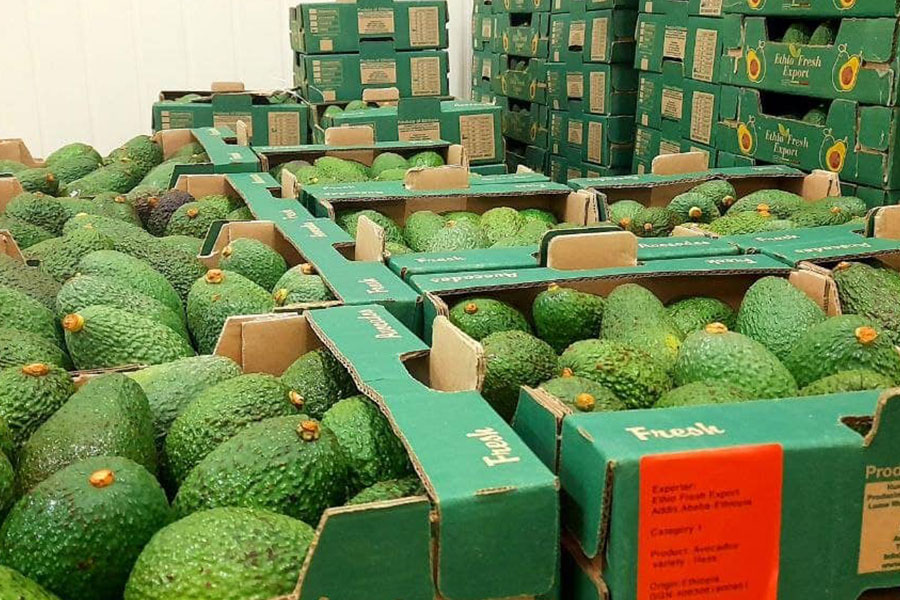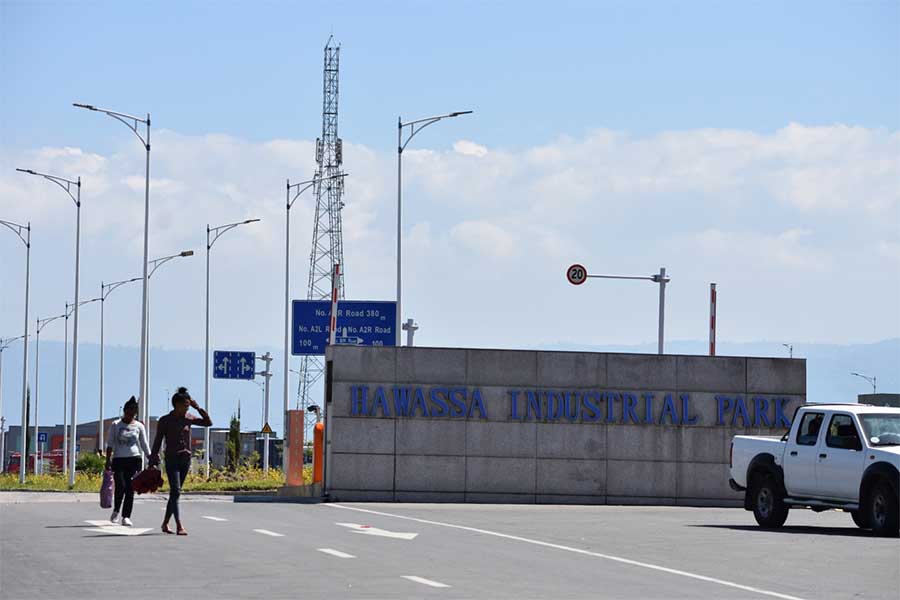
Fortune News | Jul 01,2023
Dec 4 , 2022
By Tsegaye Yilma (PhD)
Any talks of wheat export could cause unnecessary distraction from the most crucial goal of self-sufficiency. The authorities would save millions of dollars and restore national dignity by substituting commercial imports and international food aid with domestic production, writes Tsegaye Yilma (PhD), an entrepreneur and development financing expert with more than a decade of experience in the community development financing industry in the United States (US).
A farmer recently said he switched to onion this rainy season for economic and soil fertility reasons after he planted wheat on six hectares, harvesting 320Qtl. His decision could not make the authorities happy, who asked him to uproot the onion and plant wheat. The authorities have also confiscated irrigation pumps and jailed farmers who planted onions instead of wheat.
The BBC Amharic service published the story on October 26, 2022, highlighting the paradox between Ethiopia's government plan to export wheat to Kenya and the World Food Program (WFP)'s struggle to ensure food security. Supposing that the coercion by local officials is a widespread issue, the country's dream of becoming self-sufficient in wheat production is at grave risk. Their attempt to force unwilling and unprepared farmers into planting wheat crops will lead to farmers' resistance.
Ethiopia's agriculture is predominantly led by subsistence farmers, whose planting decision is a function of complex socioeconomic and environmental factors, including their consumption preferences, agroecological conditions, availability of inputs, soil quality, and rainfall. The farmers consume most of wheat they produce.
The objective of the irrigated wheat production promoted by the government is to produce wheat for the local and export markets, making irrigated wheat a commercial venture. Unlike subsistence farming, planting decision is a function of financial profitability in commercial farming. A rational farmer only engages in commercial wheat production if it is profitable. Where there is no prospect for profit, farmers shift to other, more profitable cash crops. We saw in the past how coffee farmers in the Harerghe area uprooted coffee and replaced it with the more profitable option, Khat.
One way to boost and sustain wheat production is to learn from countries that succeeded in reaching grain self-sufficiency. Some parallels between Ethiopia and India make the latter's experience worth exploring. Both countries have agriculture dominated by smallholder farmers and faced famine in 1972. It lasted for a year, with a mortality of 130,000 people in India. The famine in Ethiopia stayed for three years, resulting in the death of more than a quarter of a million people. The WFP was vital in mobilising international food aid distribution in both countries.
This is where the similarity ends.
Ethiopia faced another big famine in 1983 that lasted for two years and claimed the lives of closer to a million people. Ethiopia continues to depend on the WFP to feed its population. According to the United States Department of Agriculture (USDA) report, it is a net importer of 30pc of its wheat consumption, and about a quarter of the import is from food aid. Last year, Ethiopia imported 1.5 million tonnes of wheat, of which 26pc was food aid from the United States.
India has had no famine or mortality since the 1970s; it has become self-sufficient. The infamous "Green Revolution" helped the country boost cereal production using fertiliser, high-yield varieties, irrigation support, and credit facilities. It implemented policy measures that incentivised farmers to produce wheat profitably and keep the momentum of high production.
There is no better testament to its success than the message on the WFP country webpage that India has achieved self-sufficiency in cereal production and uses its own food distribution system. In addition to the continued government support through subsidies on agricultural inputs such as fertiliser and irrigation, the two critical pillars of India's success in wheat self-sufficiency are the Minimum Support Price (MSP) and the Public Procurement & Distribution System.
One of the challenges in agriculture is the price volatility of agricultural commodities. Supply variability, poor market integration, and information asymmetry result in price fluctuations. It is common to observe an excellent harvest resulting in a sharp price decline, which harms the future supply as farmers withdraw from sowing the crop for the year to come. Governments set MSPs to manage the effect of price fluctuation and to guarantee farmers, before the sowing season, that a fair amount of price is fixed for their upcoming crop to encourage higher investment and production of agricultural commodities.
India introduced the minimum price regime as a part of the Green Revolution in 1965 when cereal imports reached an alarming stage. It was designed to create a favourable incentive environment for the adoption of high-yielding varieties of wheat and rice, which were seen to possess vast potential for raising grain production with a recommendation from the Commission for Agricultural Costs and prices. Indian government sets the price regime for 28 crops, including wheat, during the two main cultivation seasons, the Winter Kharif (the primary rice season) and the Spring Rabi (the primary wheat season).
AMSP system work only when there is a dedicated public procurment system that pays farmers the minimum set of price. India has procurement policy is designed to ensure remunerative prices for farmers, provide food grains to consumers at affordable prices, and maintain buffer stocks of food grains to ensure food security. It keeps grain prices under control.
The responsibility to buy wheat directly from the farmers is given to the Food Corporation of India (FCI). It pays farmers theMSP, often higher than the prevailing market price. The share of public procurement in total marketed grain is around 50pc. While farmers are under no obligation to sell to government agencies, the Corporation is bound to buy all quantities offered by farmers at guaranteed prices.
The PCI sells food grains to individual state governments at a subsidised price known as the 'Central Issue Price' and the state governments distribute the wheat to consumers through a fair price or ration shops. Established after the second world war. India's Public Distribution System has become the world's most extensive universal distribution system for subsidised food grains.
India recognises wheat production as a commercial venture and uses price signals to incentivise farmers to participate in wheat production. The price offered to farmers covers all production costs and adds a generous profit margin.
To sustainably boost wheat production, Ethiopia needs a pricing system that makes wheat farming financially profitable to the farmers. India has dedicated public agencis to determine MSPs, procure wheat at the set price and agencies to distribute grains to consumers. The Ethiopian government can redefine the role of the Ethiopian Trading & Business Corporation (ETBC) and use it as a procuring entity or establish a separate agency dedicated to wheat procurement. The National Disaster & Risk Management Commission can be reorganised to purchase wheat from the public procurement agency and distribute it to consumers at an affordable price.
The central goal of India's policy satisfies domestic wheat demand, and export is not a priority. India contributed 13.1pc of the world's wheat production last year, while its share in global wheat export was only one percent. Its wheat export experience shows that the international wheat market is very competitive, dominated by a few major players such as the European Union (EU), Russia, Ukraine, Australia, Canada, and the US. It is very tough to compete.
At the current stage of Ethiopia's wheat production, any talks of wheat export could cause unnecessary distraction from wheats needs to be the most crucial goal for Ethiopia, which is self-sufficiency. The authorities would save millions of dollars and restore national dignity by substituting commercial imports and international food aid with domestic production. The slogan should be wheat self-sufficiency.
PUBLISHED ON
Dec 04,2022 [ VOL
23 , NO
1179]


Fortune News | Jul 01,2023

Fortune News | Apr 24,2021

Radar | Jan 22,2022

Featured | Oct 30,2021

Fortune News | May 31,2020

Radar | Oct 02,2021

Fortune News | Apr 13,2025

Radar | Apr 02,2022

Radar | Jul 18,2020

Radar | Dec 19,2018

My Opinion | 131981 Views | Aug 14,2021

My Opinion | 128369 Views | Aug 21,2021

My Opinion | 126307 Views | Sep 10,2021

My Opinion | 123925 Views | Aug 07,2021

Dec 22 , 2024 . By TIZITA SHEWAFERAW
Charged with transforming colossal state-owned enterprises into modern and competitiv...

Aug 18 , 2024 . By AKSAH ITALO
Although predictable Yonas Zerihun's job in the ride-hailing service is not immune to...

Jul 28 , 2024 . By TIZITA SHEWAFERAW
Unhabitual, perhaps too many, Samuel Gebreyohannes, 38, used to occasionally enjoy a couple of beers at breakfast. However, he recently swit...

Jul 13 , 2024 . By AKSAH ITALO
Investors who rely on tractors, trucks, and field vehicles for commuting, transporting commodities, and f...

Jul 5 , 2025
Six years ago, Ethiopia was the darling of international liberal commentators. A year...

Jun 28 , 2025
Meseret Damtie, the assertive auditor general, has never been shy about naming names...

Jun 21 , 2025
A well-worn adage says, “Budget is not destiny, but it is direction.” Examining t...

Jun 14 , 2025
Yet again, the Horn of Africa is bracing for trouble. A region already frayed by wars...

Jul 6 , 2025 . By BEZAWIT HULUAGER
The federal legislature gave Prime Minister Abiy Ahmed (PhD) what he wanted: a 1.9 tr...

Jul 6 , 2025 . By YITBAREK GETACHEW
In a city rising skyward at breakneck speed, a reckoning has arrived. Authorities in...

Jul 6 , 2025 . By NAHOM AYELE
A landmark directive from the Ministry of Finance signals a paradigm shift in the cou...

Jul 6 , 2025 . By NAHOM AYELE
Awash Bank has announced plans to establish a dedicated investment banking subsidiary...